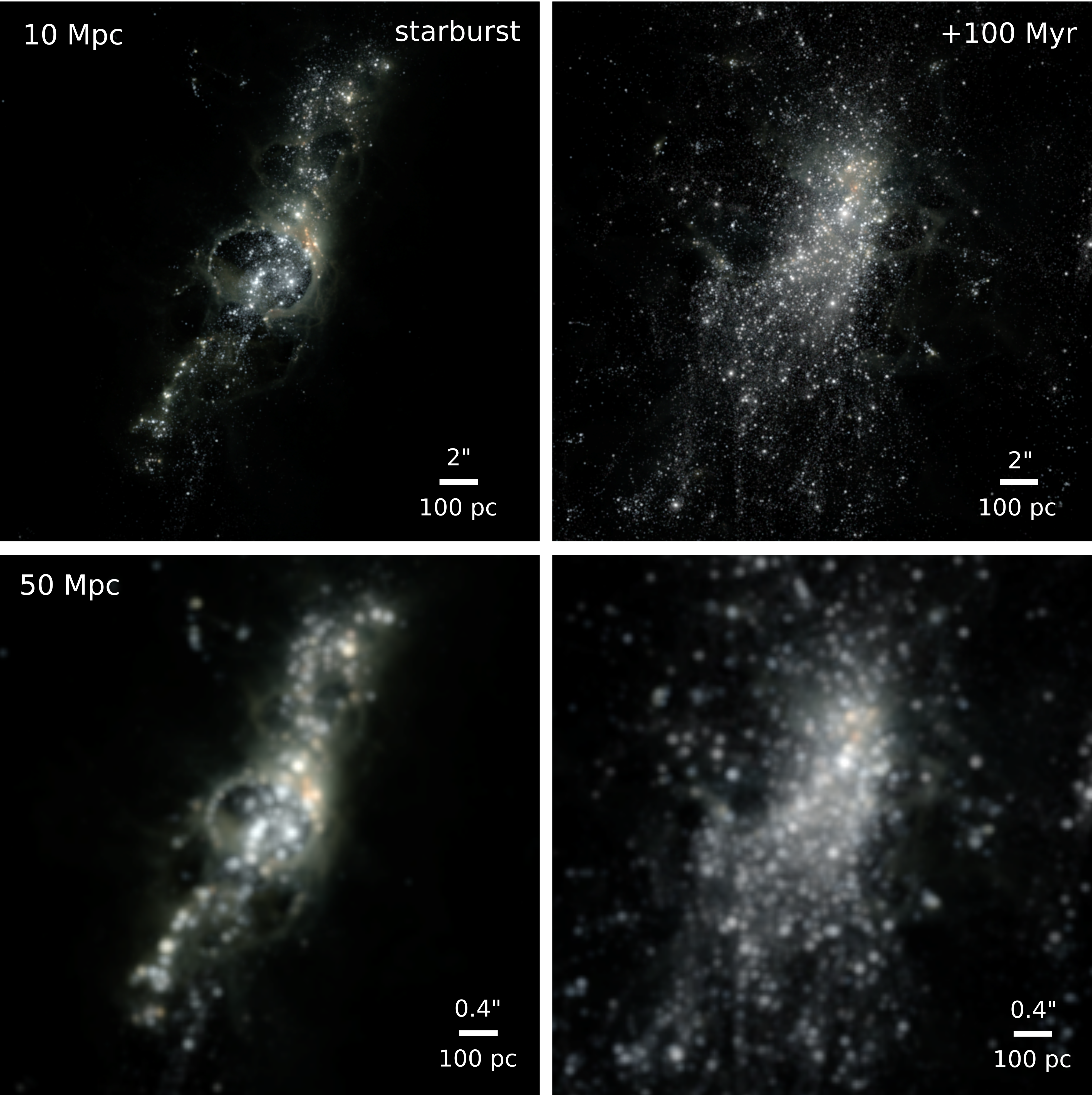Mock observations

Left: the surface density maps of stars formed during 500 Myr of simulated evolution in a dwarf galaxy viewed in edge-on and face-on projections. Middle: the corresponding V-band, 24 μm and 250 μm emission maps produced via radiative transfer post-processing. The V-band image highlights locations of bright stars and star clusters as well as their scattered emission, while the 24 μm map shows hot and more localized dust emission compared to the less localised cooler dust emission in the 250 μm map. The maps span 2 kpc across. The symbols in the second column indicate massive stars (>8 solar masses, blue) and young bound star clusters (<10 Myr, red). The rightmost column shows a composite image of 70 μm, 160 μm and μm emission, where the young star clusters and massive stars are surrounded by hot dust emitting in shorter infrared wavelengths (Lahén et al. 2022).

Color composite images of one of the dwarf galaxies studied in Hislop et al. 2021. The images are composed of radiative transfer results (SKIRT 9, Camps & Baes 2021) that have been filtered through visual and infrared bands typically used in observations. The edge-on (top) and face-on (bottom) projections in U+B (red), V (green) and I (red) bands are shown in the left column and in 70 μm (blue), 160 μm (green) and 250 μm (red) in the right column. The visual bands show direct, scattered and attenuated stellar light, while the infrared bands show stellar emission absorbed and re-emitted by the dust in the ISM. Cooler and larger dust grains emit in longer wavelengths, and the hot dust shown by the blue regions on the right surround young star clusters that are seen as concentrations of visual light in the left images. The images span ~3.3 kpc.

Mock observations of the dwarf galaxy merger at the time of the starburst (~170 Myr, left) and 100 Myr later (right). The images are color composites of B (blue), V (green) and I (red) bands at Hubble Space Telescope resolution assuming the system is at a 10 Mpc (top) or a 50 Mpc (bottom) distance, produced using dusty radiative transfer with SKIRT 9 (Camps & Baes 2021). The star formation and star cluster properties extracted from the radiative transfer results have been analysed in Lahén et al. 2022.
A rotation around the radiative transfer modelled dwarf starburst in B (blue), V (green) and I (red) bands at a HST resolution assuming the system is at a distance of 10 Mpc. The dense gas structures that follow the outline of the few hundred pc wide supernova cavity cause strong obscuration of the most intense star formation region in some of the projections.